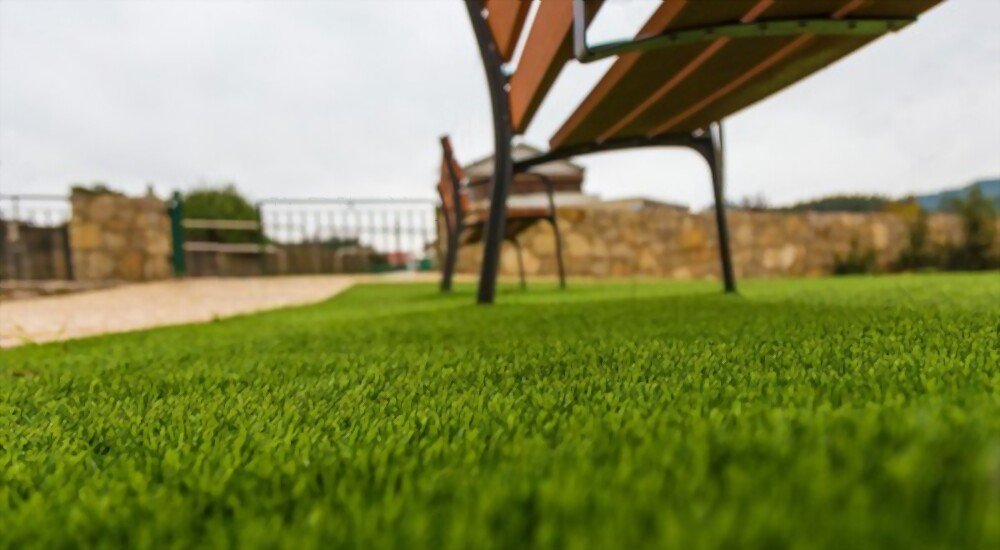Can our gardens embody the artistry of nature’s produce while offering us the convenience and adaptability that our modern lives sometimes demand? How can we transform our lawns into picturesque landscapes without expending too much time, energy, and water? Is there an overlap between practicality and aesthetics, where we might reap the benefits of both? The evolving field of landscaping, backed by revolutionary innovations, might just hold the answers. Meet the rising star of the landscaping industry – synthetic grass.
Synthetic grass, or artificial turf as it is widely known, has seen a dramatic increase in popularity over recent years. No longer just the domain of sports pitches and playing fields, it’s now regularly adopted for residential lawns and public spaces. The reason? The long list of benefits it brings, including high durability, low maintenance, and water conservation. In this blog post, we’ll delve deep into this synthetic sensation that is transforming our perceptions of traditional landscaping.
Join us as we explore the reasons behind the rise of synthetic grass, its potential impacts, and the pros and cons you need to consider. So, without further ado, let’s delve into the transforming world of greens because the future of landscaping may be less ‘natural’ than you think!
Why Synthetic Grass?
Let’s start by addressing the burning question – why has synthetic grass become so popular? The primary reason might surprise you. It has less to do with aesthetics and more with our ever-evolving lifestyle and consciousness towards the environment.
Secondly, synthetic grass offers durability that natural grass can’t compete with. It doesn’t brown in the heat or become patchy due to heavy usage or adverse weather conditions. With a life expectancy of 15 to 20 years, it holds its own in the long run.
Lastly, synthetic grass is a water-friendly alternative to a natural lawn. In regions where water restrictions are common or are under drought conditions, synthetic grass can considerably conserve water.
What is the Impact of Synthetic Grass on Environment?
Undoubtedly, synthetic grass has numerous advantages. But what about its environmental impact? On the one hand, it eliminates the need for regular watering, mowing, or use of pesticides, which undoubtedly reduces your carbon footprint.
However, it’s important to remember that synthetic grass is made from plastic and requires a manufacturing process that can generate pollution. There’s also the issue about its end-of-life disposal. Non-recyclable synthetic grass can end up in landfills.
That being said, companies are significantly investing in producing more eco-friendly varieties of synthetic grass. Look for options made from recyclable materials or grasses with a longer lifespan to offset the environmental concerns.
Pros and Cons of Synthetic Grass: A Balanced Perspective
Synthetic grass offers a slew of benefits such as low maintenance, high durability, and substantial water-saving opportunities. It’s also great for those with allergies, as it doesn’t carry natural grass’s pollen.
However, it’s more expensive upfront, can get hot in direct sunlight, and isn’t as soft underfoot as natural grass. Additionally, some people miss the smell and feel of natural grass and feel it lacks authenticity.
Synthetic Grass: How to Choose and What to Look for?
When choosing synthetic grass, it’s essential to pay attention to the pile height, density, and colour. A longer pile height can make the grass look lush, while a high-density grass can offer more durability. As for the colour, look for a mix of tones that mimic natural grass for a more realistic look.

Don’t skimp on the quality. Cheap versions tend to look less realistic and wear out sooner. Opt for UV protected grass to prevent the color from fading with sunlight.
Key Players and Trends in the Synthetic Grass Industry
With the rising trend of synthetic grass, several key players are dominating the market – Greenfields, Fieldturf, and Tarkett group to name a few. From innovative products that reduce glare to more natural-looking color choices, the synthetic grass industry is full of exciting developments.
Conclusion: The Transformation of Green Spaces with Synthetic Grass
The rise of synthetic grass signifies a step change in our landscape choices – an evolution reflecting our strive for sustainability, practicality, and aesthetic appeal. It balances our desire for beautiful green spaces with the pressing requirements of water conservation and low maintenance.
Yet, it does present its own set of challenges and concerns, particularly related to its manufacturing and disposal impact on the environment. We must continue to urge manufacturers to create more environmentally conscious solutions and make responsible choices as consumers. Above all, the rise of synthetic grass highlights the exciting and transformative times we live in, where our individual choices can collectively shape the future of our landscapes.
